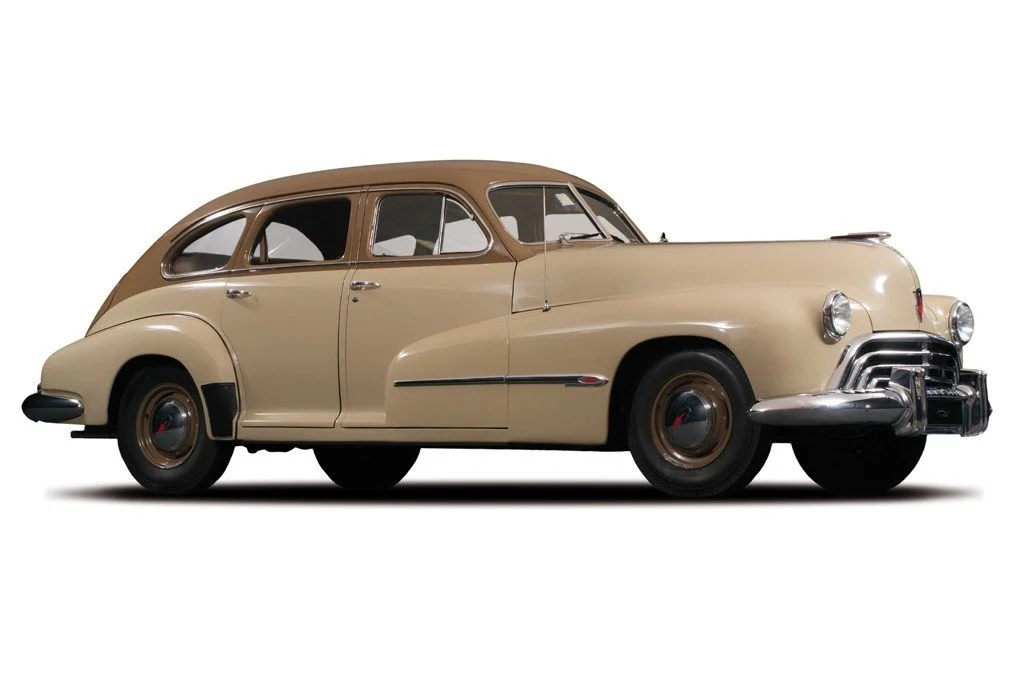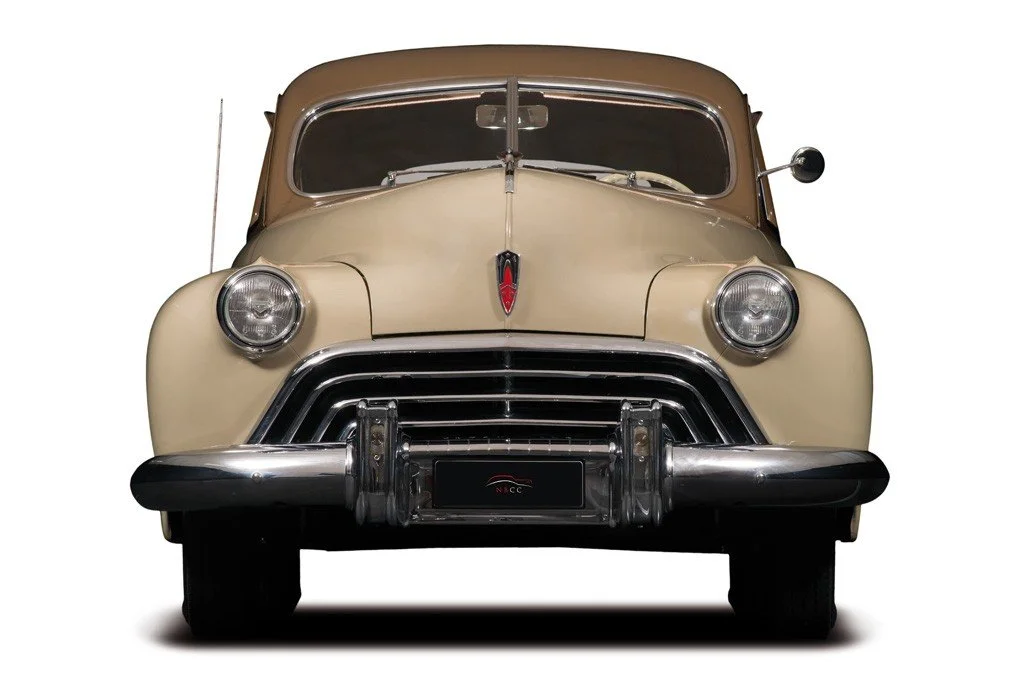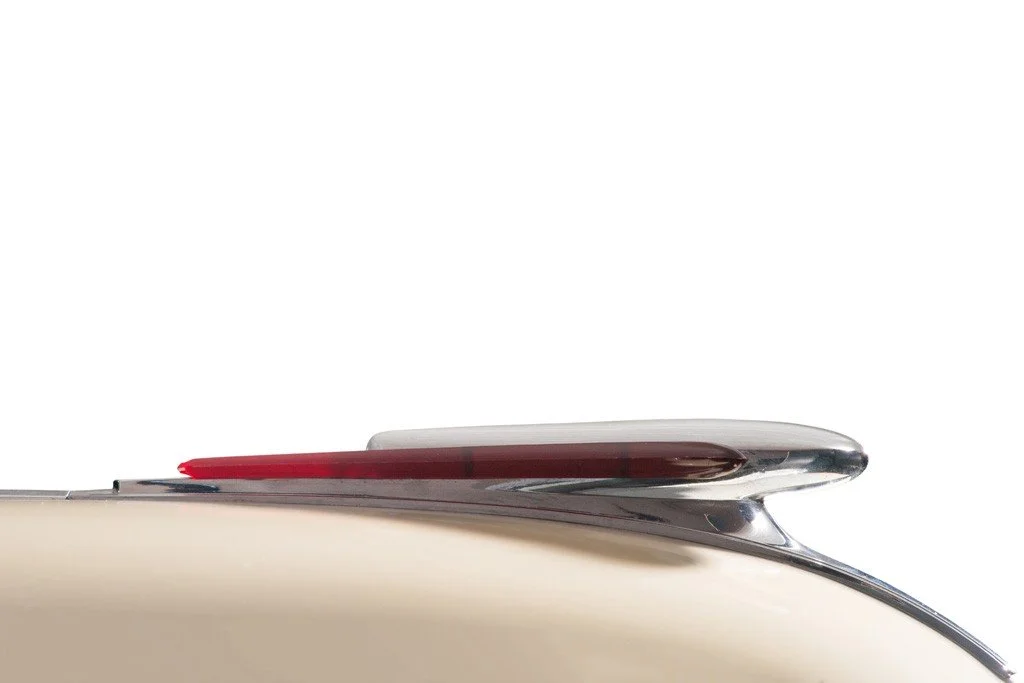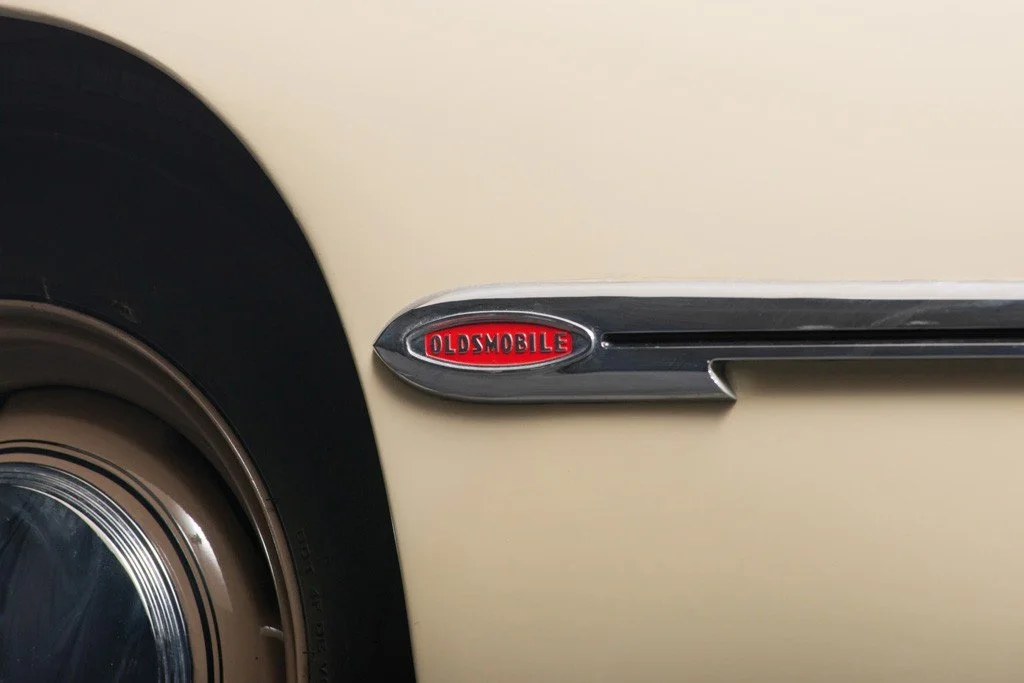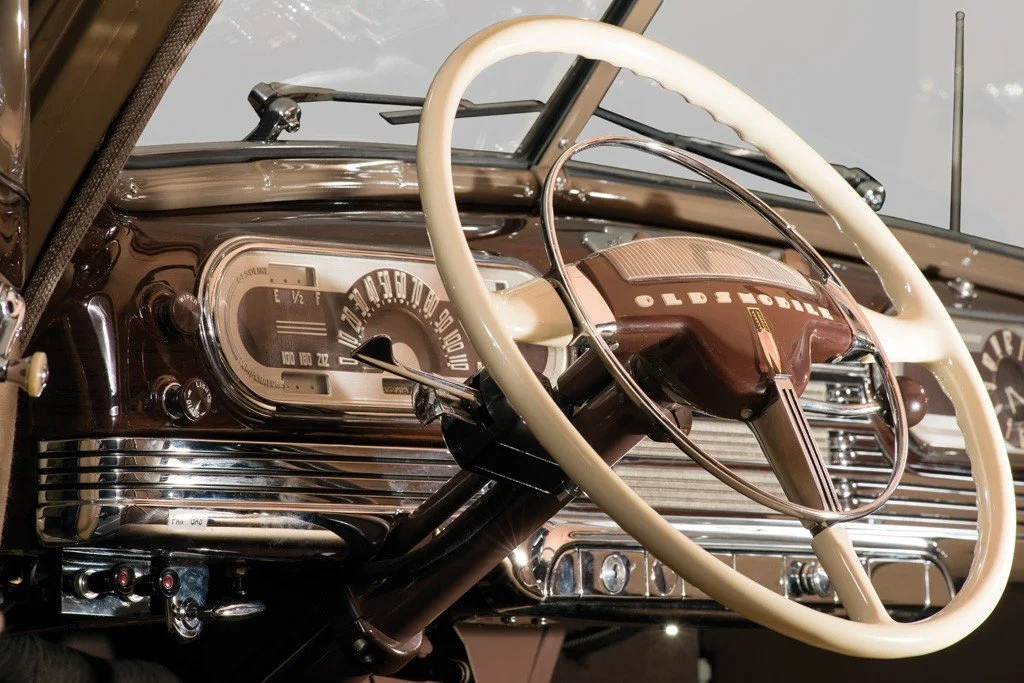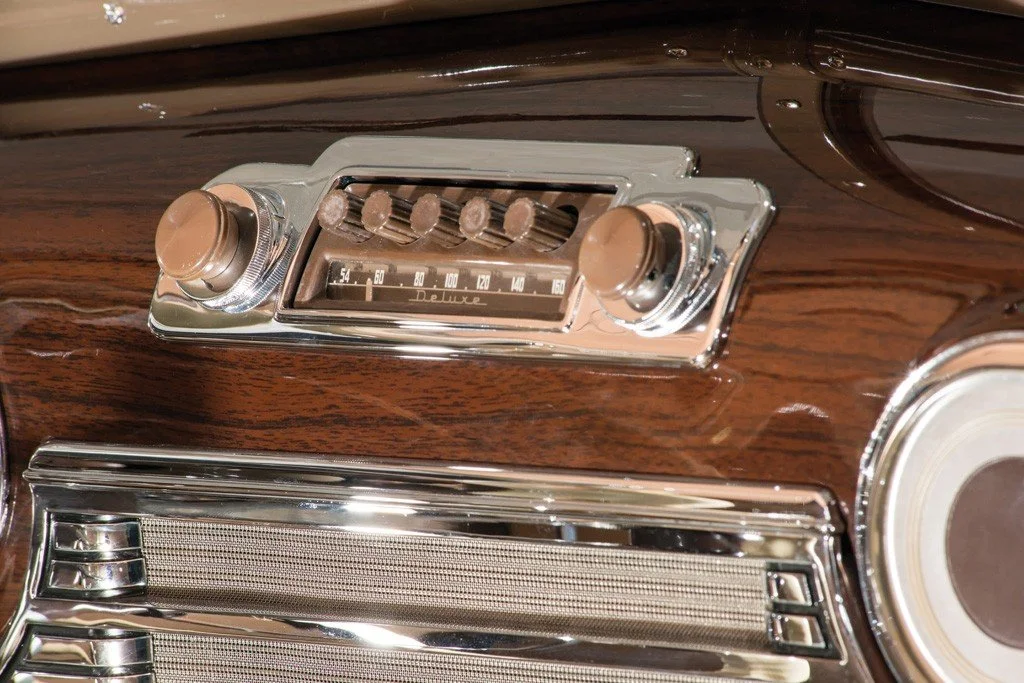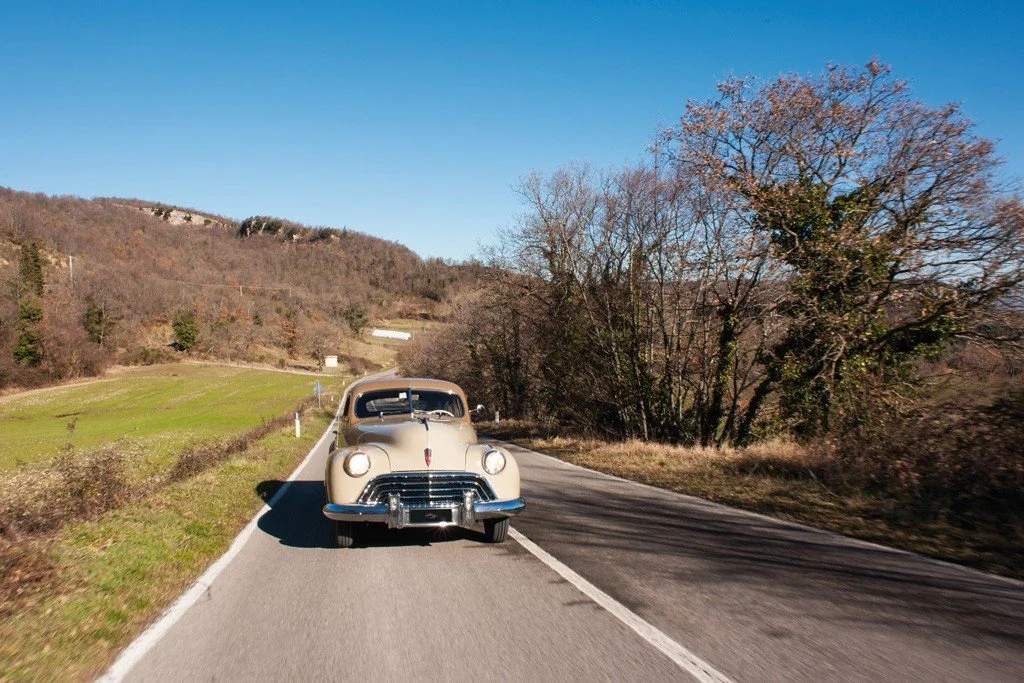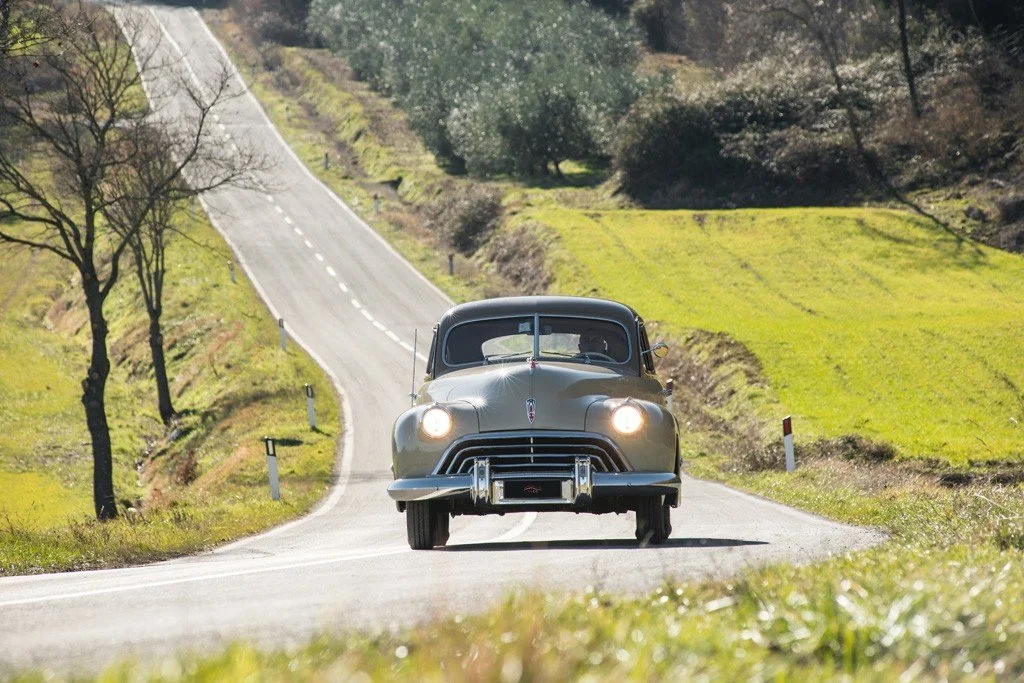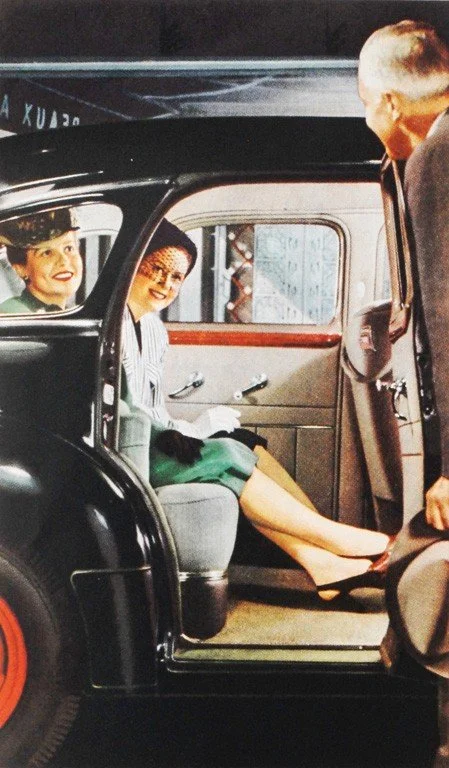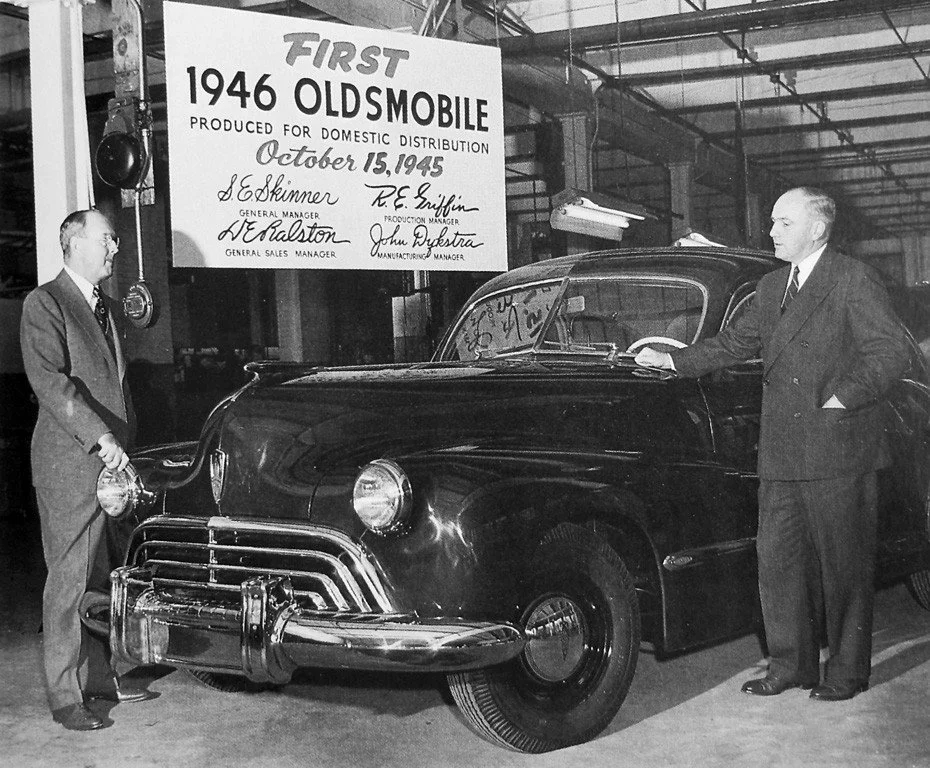-
This Oldsmobile is a perfect homage to 1946: a model belonging to the Series 76 in the 4-door Sedan DeLuxe version, sold new in Switzerland, it was owned by a dentist from Bellinzona. In fact, the name of General Motors Suisse, Bienne can be seen on the body plate. Thus the Olds spent its years roaming the scenic Swiss roads until it was left, in the '60s, in a demolition yard in Riazzino, near Bellinzona in Canton Ticino. At this point a collector from Bologna came on the scene and in the '70s decided to take the poor Oldsmobile home with him. The car had got to 2009 without undergoing any restoration when Nicola Bulgari bought it to bring it back to its original splendor. The 1946 Olds was not in good condition but the right treatment of the interior upholstery and the chrome parts - together with reproducing the particular veining of the wood on the dash - was carried out in the States by the hand of the expert Keith Flickinger of Precision Motor Cars in Allentown, Pennsylvania. The renovation of the bodywork and engine, on the other hand, was entrusted to Italian experts who rigorously followed and respected the original specifications. Upon completion of the work, the chassis, body, engine and transmission were reunited with the parts returning from the States to be reassembled. This job sounds simple on paper, but in reality entailed hours and hours of high precision labor.
-
Company
General MotorsWheelbase
125inInterior trim
Beige clothBrakes
front and rear drumsMake
OldsmobileLength
214inEngine
inline 6 - 238cidTires
6.00x16Model
Series 76 DeLuxeWidth
76inCarburetor
1 Downdraft 1-barrelOriginal Price
$1,274Body style
4-door SedanWeight
3655lbsHorsepower
100hp @ 3400rpmProduction
2,179Model year
1946Exterior paint
Maroon/BeigeTransmission
Syncro-Mesh 3-speed manual -
The Oldsmobile Special Sixty, Dynamic Seventy and Custom Cruiser 90 series cars built during that shortened last year of production (which ceased on February 3, 1942) were wider, lower and longer, and sported lengthened "Fuselage" front fenders and widely spaced headlamps flanking a reinforced bi-level bumper and grille. When production of 1946 Oldsmobiles began on October 15th, 1945, the cars were easily identified by details like one-piece front bumpers, down-turned four-bar grilles with a center post, and minor trim.
The three trim levels used before the war returned. The six-cylinder Special Sixty, which used a 119-inch wheelbase, came in fastback two-door club coupe, fastback four-door club sedan, notchback four-door sedan, convertible and wood-bodied station wagon forms. The six or eight-cylinder Dynamic Seventy series, whose wheelbase stretched to 125 inches, was available as a two-door club sedan or a four-door sedan; the premium eight-cylinder Custom Cruiser Ninety series, also on a 125-inch wheelbase, could be had as a four-door sedan, a two-door club sedan or a convertible.
The tried-and-true mechanics underpinning these cars, which featured "Unisteel" bodies over crossmember-reinforced X frames, were pressed back into service for the post-war versions; the Special Sixty and Dynamic Seventy cars designated 66 and 76 used an L-head 238 cid straight-six engine. This cast-iron block, with its 3-1/2 x 4-1/8-inch bore and stroke and five main bearings, used a 6.5:1-compression ratio and a one-barrel Carter downdraft carburetor to generate 100 hp at 3,400 rpm. This engine continued through 1948 with electro-hardened aluminum pistons, a high-carbon crankshaft and an automatic choke and fast-idle system on the Carter carburetor.
Both the straight-six and straight-eight engines came with a standard, column-shifted syncromesh three-speed manual transmission. Only the most frugal buyers stuck with the three-pedal version; a much more popular option, costing less than $200, was the advanced four-speed Hydra-Matic Drive automatic transmission, which Oldsmobile debuted to great acclaim in 1940 and proved through wartime tank and truck applications. Braking was handled by a hydraulic four-wheel cast-iron drum system, 11 x 2 inches front and 11 x 1-3/4 inches rear, hidden behind 6.00 x 16 tires (6.50 x 16 on convertibles and station wagons). The Special Sixties included features like dual sun visors, cigarette lighters and cloth upholstery, while convertibles added a standard power top and genuine leather upholstery. Station wagons seated up to eight passengers and could be had in standard or deluxe trim. Deluxe-trimmed Seventy series cars added an E.Z.I. rear-view mirror, foam rubber seat cushions, rear center armrests, broadcloth upholstery and chrome wheel trim rings. Ninety-eight models added a deluxe steering wheel with a horn ring, a standard electric clock, rear fender skirts and 7.00 x 15 tires, and 98 convertibles featured hydraulic power for the windows and front seat. Options included "Condition-Air" heating and ventilation and a six or seven-tube radio.
The 1946 through 1948 Oldsmobile lineup changed very little, with the exception of late-model 1948 Series 98 cars; hood and fender ornamentation varied minimally from year to year, and the grille lost its center bar for 1948. Pricing of the Special Sixty ranged from $1,108 for a 1946 club coupe to $1,184 for a Dynamic 76 club sedan. The top-of-the-line Custom Cruiser 98 convertible showed a price increase from $1,840 in 1946 to $2,040 in 1947. Despite the cars' rising prices, their steadily increasing sales allowed Oldsmobile to retain its seventh-place ranking in the American auto industry.

